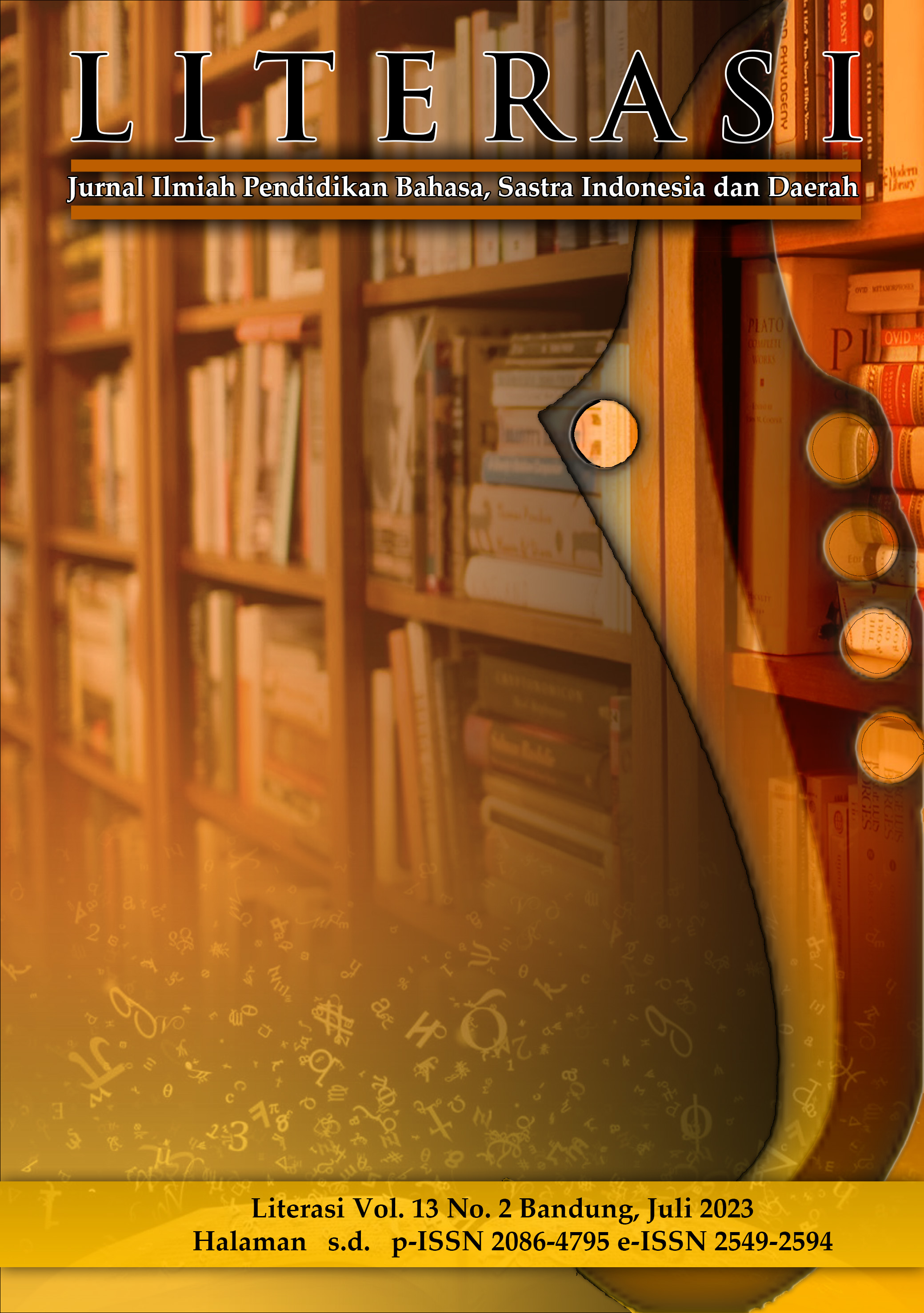ANALISIS MAKNA SUPERSTISI KATEGORI MATA PENCAHARIAN DAN HUBUNGAN SOSIAL PADA MASYARAKAT MELAYU RUMBAI
DOI:
https://doi.org/10.23969/literasi.v13i2.7383Abstract
Superstition is a belief that is believed and can be proven logically and also does not necessarily happen. In this study, researchers conducted research in one of the villages in East Rumbai District, namely in the village of Tebing Tinggi Okura. The researcher conducted this research based on a deeper curiosity about the connotative and denotative meanings of the superstitions of the East Rumbai Malay community, this superstition will later lead to the values of people's trust in living life in their environment, this research helps the community teach moral teachings to children and youth, so that it can be carried out in everyday life. Because this superstition is very closely related to the customs and culture of the Malay people and is the legacy of their ancestors. This study aims to analyze a meaning related to the formulation of the problem, namely the superstitious meaning of livelihoods and social relations in the East Rumbai Malay community in the village of Tebing Tinggi Okura. Researchers used a qualitative descriptive method with a type of field research, with a qualitative approach. Researchers used three stages in analyzing data, namely data editing, data presentation, and drawing conclusions. The results of the study found 27 denotative and connotative meaning data. The results of the analysis found by the author can draw the conclusion that the superstition found in a Rumbai Malay community contains denotative and connotative meanings. In Malay society, especially the oldest people for generations, apply superstition in daily life because the use of superstitious can regulate the norms in society, especially in livelihoods and social relations.
Downloads
References
Chaer, A. (2013). Pengantar Semantik Bahasa Indonesia (Kelima). Rineka Cipta.
Danandjaja, J. (1997). Folklor Indonesia Ilmu Gosip, Dongeng dan Lain-lain (V). Pustaka Utama Grafiti.
Gunawan, K. (2017). Strategi Pemasaran Dalam Meningkatkan Usaha Para Anggota Baitul Maal Wat Tanwil. Jurnal Kajian Ekonomi Dan Bisnis Islam, Volume 10, 234–257.
Ihsanullah, M. (2016). Analisis Modal Sosial Pada Himpunan Pelajar Mahasiswa Pelalawan (HIPMAWAN) Di Pekanbaru. Jom Fisip, Vol. 3 No., 15.
Meirina, M. (2015). Penciptaan Mata Pencaharian Alternatif: Strategi Pengurangan Kemisikinan dan Perlindungan Sumber Daya Laut ( Studi Kasus Kota Batam Dan Kabupaten Pangkajene Dan Kepulauan). Jurnal Kependudukan Indoneisa, Vol.10 No., 150.
Pateda, M. (2010). Semantik Leksikal (Cetakan Ke). Rineka Cipta.
Sugiyono. (2017). Metode Penelitian Kuantitatif dan R&D (Pertama). Alfabeta.
Tarigan, H. G. (2009). Pengajaran Semantik. Angkasa.
Downloads
Published
Issue
Section
License
Copyright (c) 2023 Literasi: Jurnal Ilmiah Pendidikan Bahasa, Sastra Indonesia dan Daerah

This work is licensed under a Creative Commons Attribution 4.0 International License.
Hak cipta artikel yang diterbitkan di jurnal ilmiah dimiliki oleh penerbit, bukan penulis. Hal ini berkaitan dengan koordinasi hak akses untuk cetak ulang atau penggunaan lainnya. Dalam hal ini penerbit mempunyai keluluasaan untuk mempublikasikan artikel sesuai dengan kesepakanan Transfer Agreement (penyerahan hak cipta) antara penerbit dengan penulis.















